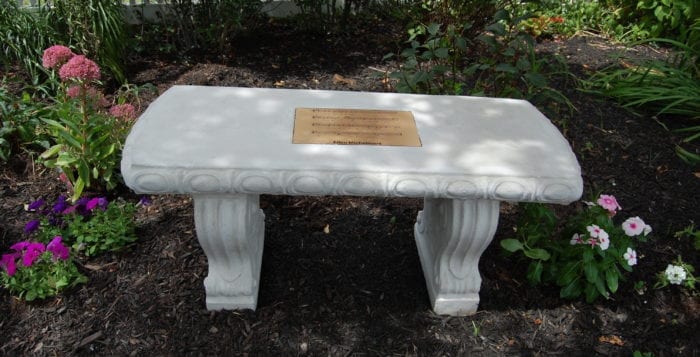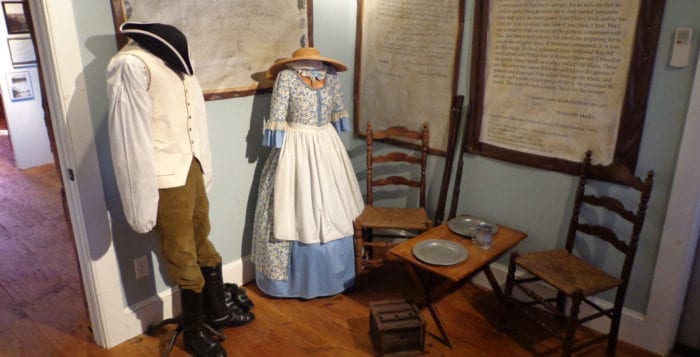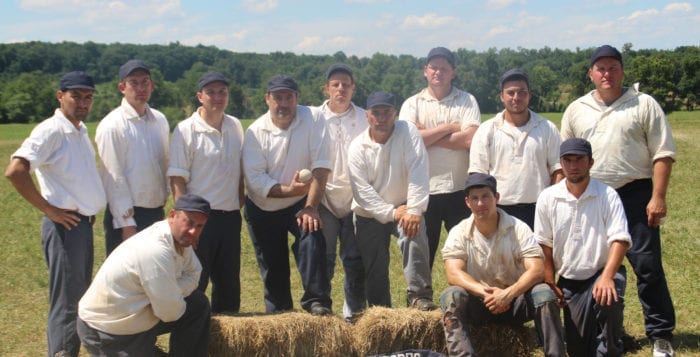By Heidi Sutton
Friends and family gathered at the garden at Theatre Three in Port Jefferson to dedicate a bench in memory of the late Ellen Michelmore on July 24. Michelmore, who served as the theater’s resident musical director for more than 25 years, passed away this May at the age of 63 after a five-year courageous battle with leiomyosarcoma, a cancer that infects muscle tissue. “Ellen loved this theater,” said her husband Jeff Lange. “She was the bravest soul I ever knew,” he added.

A gold plate on the bench is inscribed with the lyrics from Joni Mitchell’s “Woodstock”:
Try ‘n’ to get my soul free
We are stardust We are golden
And we got to get ourselves
Back to the garden.
Reached by phone Monday afternoon, Theatre Three’s Artistic Director Jeffrey Sanzel said the lyrics were chosen because “those were the opening lyrics to our ‘Summer ‘69: Return to Woodstock’ that Ellen sang in the very first production. It’s where it all started — it has so many levels in its meanings.”
Jean Sorbera, who had been Theatre Three’s resident choreographer for many years, purchased the bench and donated it. It now sits alongside memorials for two other members of the Theatre Three family gone too soon, Brent Erlanson and Bonnie Vidal.
During the ceremony, Michelle LaPorte and Gerry Saulter performed a moving rendition of “Progressions para Pauline,” a flute and guitar piece by Argentinian composer Luiz José Merlin, in Ellen’s honor.
A reception followed at the theater’s Second Stage. Sanzel gave a toast to Michelmore with her favorite wine, Prosecco, saying, “There are no words,” as he choked back tears. Scanning the packed room, it was incredible to see how many lives Michelmore had touched over the years.
For actors Hans Paul Hendrickson, Steven Uihlein, Sarah E. Bush and TracyLynn Conner, memories of Ellen were practically identical — how she made them feel welcome when they first arrived and helped them perfect their craft. Conner said she and Ellen formed a close personal relationship and would get together often to sing. Conner wore a pair of Ellen’s shoes to the dedication.
“I absolutely adored Ellen and miss her very, very much. She was like family to me,” said actor Steve Ayle. “We worked together at Theatre Three for the last 25 years, most recently playing opposite each other in the [2015] One Act Play Festival’s ‘Quack.’ Ellen was warm and kind beyond compare, her talent immeasurable, and her big, bright eyes reflected her remarkably positive and enduring spirit, even in the face of her illness. She will live on forever in my heart and soul.”
Douglas Quattrock, who has been at the theater full time since 2002 but has been acting there since the mid-80s, was clearly moved by the dedication. “Besides being one of the most caring and genuine people you could ever meet, Ellen was also an inspiration,” said a tearful Quattrock. “Even though I have never had any formal training in composing music, Ellen always encouraged me to do it. ‘Just play what’s in your heart’ is what she would say. I was honored to work on so many shows with her.”
Michelmore was such an integral part of the Theatre Three family that she was honored with a musical tribute “Ellen Michelmore: Notes From The Heart,” in 2014. The evening featured singers, actors and musicians who had been blessed to work with her. “Jeff [Sanzel] asked me to write a song for Ellen [for the tribute],” continued Quattrock. “The opening lyric that immediately came to my mind was ‘You’re The Music, You’re The Song.’ To me, that was Ellen … She was the music.”
Actor and musician Kevin Story also reflected on his time with Michelmore, saying, “Ellen was a unique light. From the moment I set foot inside Theatre Three over ten years ago, she was encouraging and supportive, a great mentor, colleague and friend. There are really no words, as Jeff said.”
Sanzel said that Theatre Three’s Aug. 19 and 20 performances of “Woodstockmania: Woodstock in Concert,” a musical created by Michelmore, will be dedicated to her memory. A portion of the proceeds will go to the Memorial Sloan Kettering Cancer Center. In addition, Sanzel said a plaque bearing the inscription, “Ellen Michelmore: The Spirit of Music Ever Present” will be placed in the orchestra pit and “a portrait of Michelmore will be commissioned for the lobby.”
Kevin Story surely spoke for all who attended the ceremony that day, saying, “We’ve all been touched by Ellen in an amazing way, and we can only hope her light will continue to shine through us somehow. She will be missed.”




















